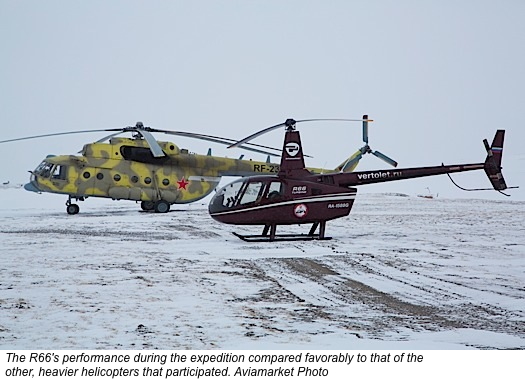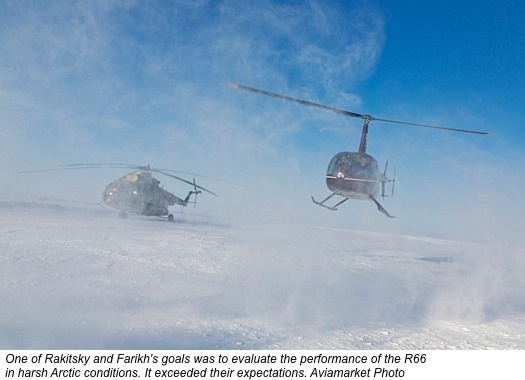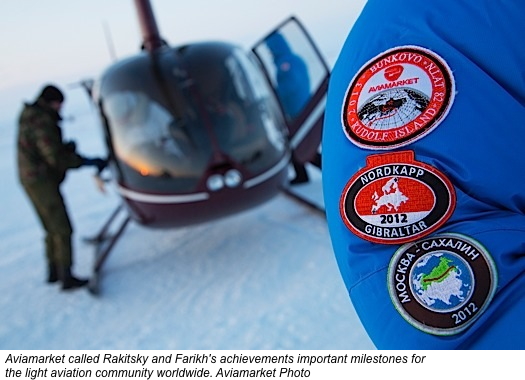
The Russian helicopter company Aviamarket has shared photos and details of a Robinson R66 expedition to the North Pole that took place last month.
Aviamarket chief pilot Dmitry Rakitsky and pilot Mikhail Farikh launched from the Bunkovo heliport near Moscow on April 2, setting course to Rudolf Island. Their first objective was to join the polar expedition “Following the Trail of the Two Captains.” Led by Oleg Prodan, the expedition was searching for traces of an early 20th century expedition led by Georgy Brusilov, who in 1912 departed on the St. Anna (Svyataya Anna) brig under the Russian flag to travel the Northern Sea Route. Having passed the Kara Strait, the ship got icebound near the western shores of the Yamal Peninsula. By early 1914 it had drifted to the north of Rudolf Island.
Some of the crewmembers abandoned the ship, of whom two were eventually rescued, including the navigator Valerian Albanov. However, no traces of the St. Anna, Brusilov or the remaining crewmembers were discovered until recently. The mystery captured the imagination of the Soviet novelist Veniamin Kaverin, who used members of the expedition as prototypes for the characters of his well-known novel “The Two Captains.”

Flying a Robinson R66 Turbine helicopter, Rakitsky and Farikh reached the northernmost point of land of the Russian Federation: Rudolf Island of the Franz Joseph Archipelago. Then, having flown 135 kilometers north, the crew landed on an ice floe to install geolocation beacons that would help to trace the possible route of St. Anna’s drift and, perhaps, find remnants of the missing brig.
Rakitsky and Farikh then set course for the North Pole — the place of beauty and tranquility that has been attracting explorers for years. The pilots were the first to reach the northernmost point of the Earth on the light single-engine Robinson R66 without any special Arctic equipment installed.
Testing R66 in the extreme conditions of the Far North was another important objective for the crew. Although R66 had been demonstrating continued reliability and performance in Aviamarket’s everyday operations, it needed to be evaluated in a tough climate, and the North Pole expedition provided this opportunity. The journey took 75 flight hours over 12 days, including days when Rakitsky and Farikh were covering more than 2,000 kilometers in the most extreme environment imaginable.

Fighting icing, struggling to start the engine in extremely cold conditions, and monitoring the performance of components and assemblies at very low temperatures were just a few of the things the pilots had to contend with throughout the trip. However, the R66 exceeded their expectations, with systems functioning properly and no serious failures. Based on their observations of the R66 in Arctic conditions, Aviamarket will prepare a recommendations report and submit it to Robinson Helicopter Company for consideration.
Farikh and Rakitsky returned to Moscow on Sunday, April 14. As expeditions of such significance rarely use light aircraft, their success was of great importance not only for Russian light aviation, but also for light aviation worldwide.










